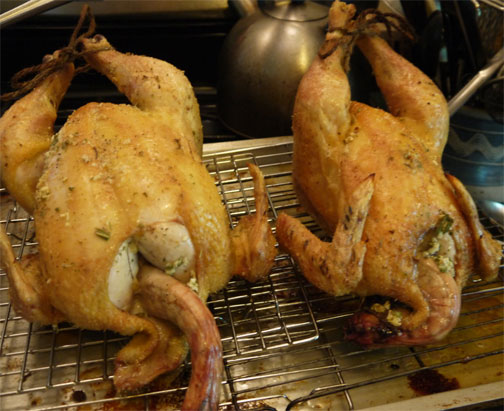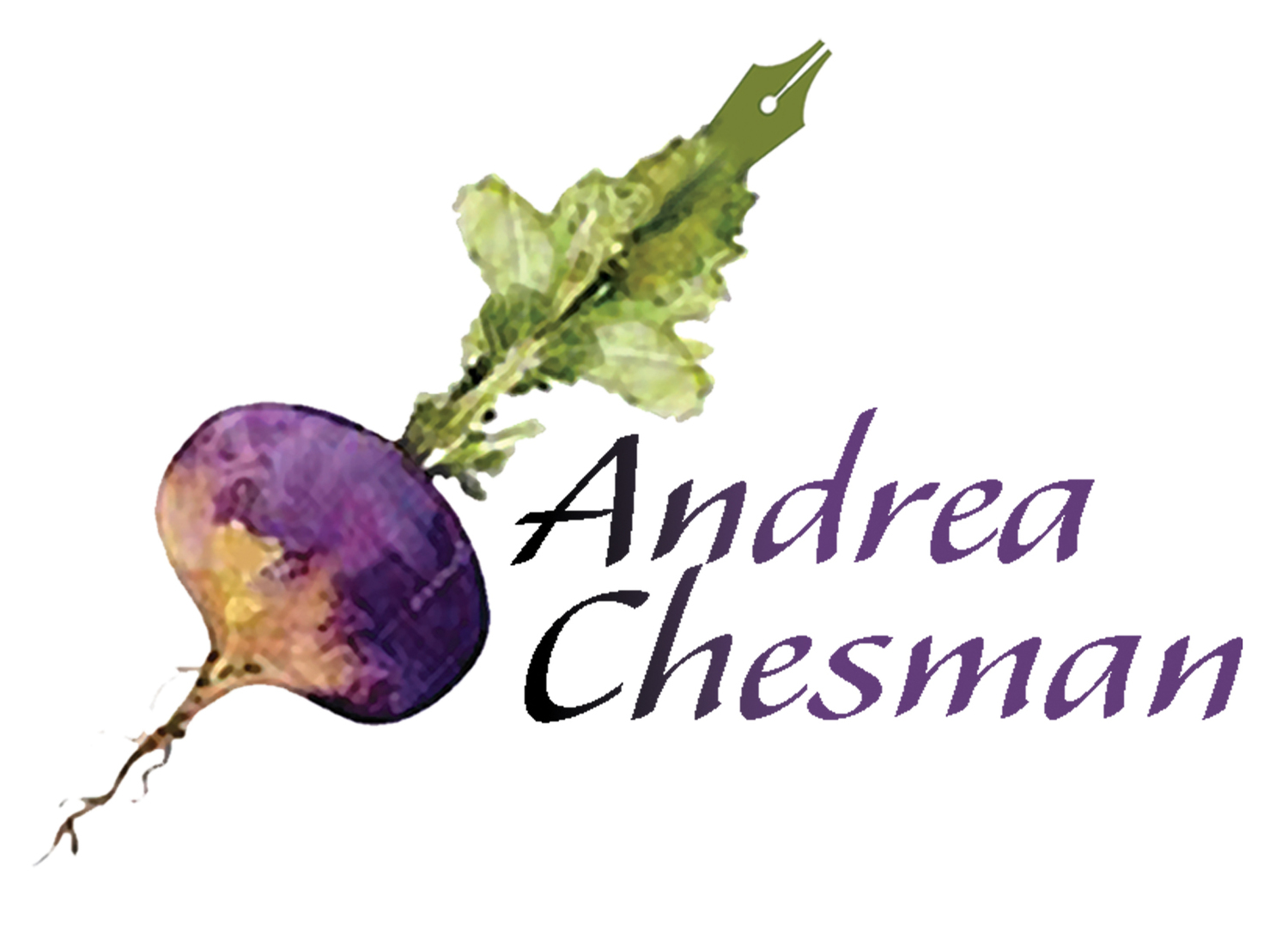 Red Ranger hen to practice harvesting, to see if dry plucking yielded better skin, and to get a sense of whether there is a difference in flavor among breeds.
Red Ranger hen to practice harvesting, to see if dry plucking yielded better skin, and to get a sense of whether there is a difference in flavor among breeds.
 Cornish Cross hen
Cornish Cross hen
The hens he brought home were an 8-week-old Cornish Cross and an 8-week-old Red Ranger. The Cornish Cross is a white feathered, big-breasted lady and the standard commercial broiler breed. This hen dressed out at 4.1 pounds. The Red Ranger, a French hybrid created in the 1960s is a slower-growing breed, known for its flavor. This bird was a scrawny 3.6 pounds, with a long, narrow breast. The dark meat of this bird is proportionate to the white meat. In my family, dark meat is always favored over white meat.
 Meanwhile, back in the kitchen...
Meanwhile, back in the kitchen...
While I was roasting the two birds side-by-side to detect whether there was going to be a flavor difference, Sam returned to his friend’s place, where he helped to harvest the remaining 40 odd birds. Besides being significantly bigger, Sam reported, the Cornish Crosses proved easier to pluck because they had far fewer feathers. And, the Cornish Cross were bigger in part due to their aggression at the feeder, which meant they ate more. They also yielded more fat. Once in the vacuum-sealed bags, they looked more like supermarket chickens.
Meanwhile, back in the kitchen, I set my two birds on racks in a roasting pan, breast side down, and roasted them at 500°F for 20 minutes. Then I turned them over for another 10 minutes at 500°F. By then the skin was golden and the drippings were beginning to smoke. I decreased the heat to 325°F, added a little water to the pan to decrease the smoking, and roasted until the meat in the thickest part of the thigh registered 165°F. The big bird took about 20 minutes longer than the smaller bird (which I removed from the oven and let sit under a tent of aluminum foil).
The problem with roast chicken—if you consider it a problem—is that it calls out for gravy and mashed potatoes. Add a cooked vegetable (fresh spinach), and you are getting close to a Thanksgiving meal with lots of timing issues and lots and lots of dirty pans (and a failure to remember to photograph it). You’ll have to take my word that was a fine dinner—and provided lots of leftovers.
The flavor? The Red Ranger was the clear winner in the flavor department. It may have looked scrawny, and the texture was definitely more stringy, but the flavor of the flesh was superior to the Cornish Cross and to any supermarket bird I’ve ever had. The dark meat tasted almost like turkey, and the white meat was juicy and delicious. The Cornish Cross lost out only in comparison. It was certainly more tender and and perhaps more juicy. On its own, we would have been mighty pleased. (I have to add that the Cornish Cross leftovers were juicier and much more tender.)
 Roast chicken!
Roast chicken!
Where will we go from here? Probably to a breed we haven’t eaten before. The experiment continues. Please stay tuned.
